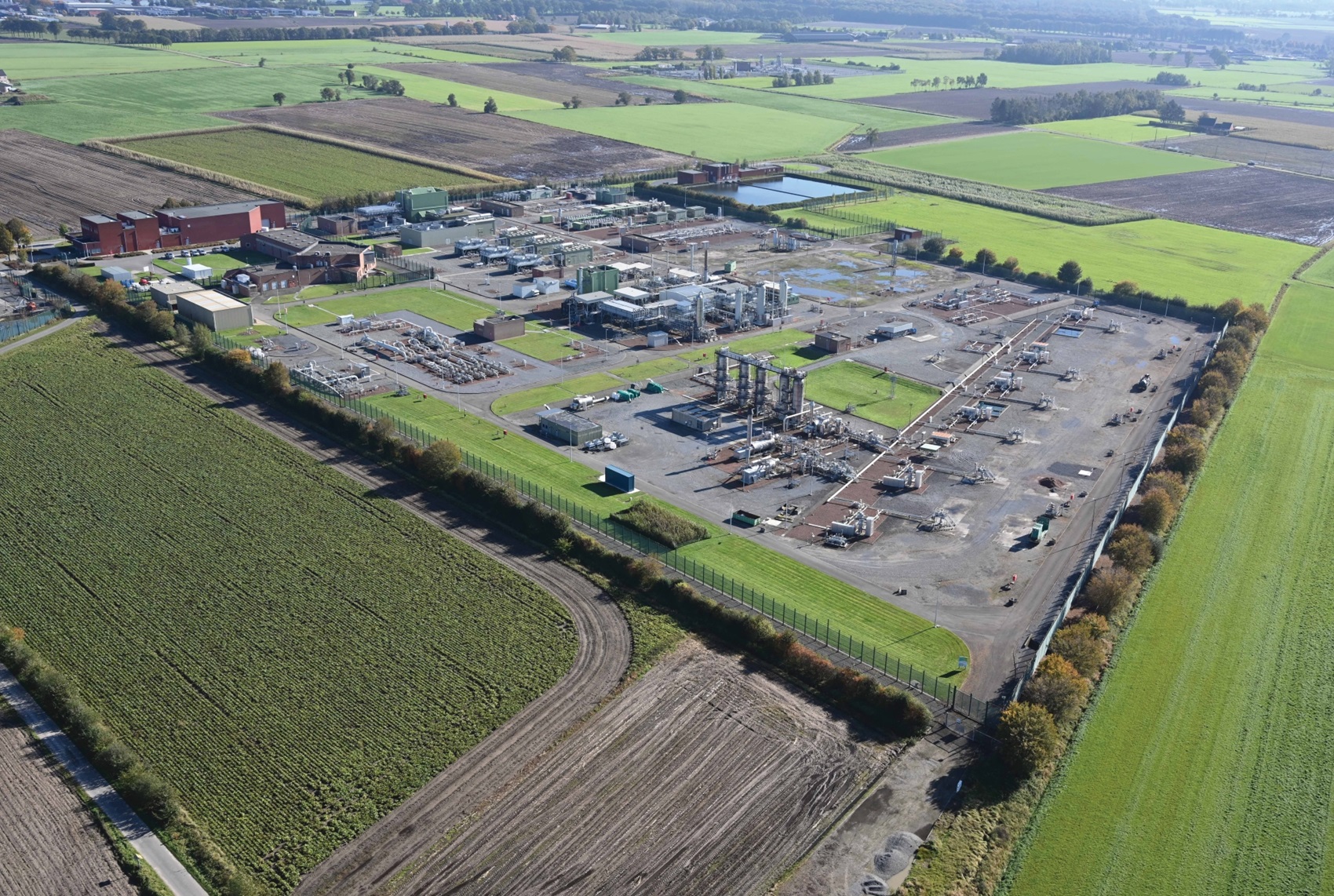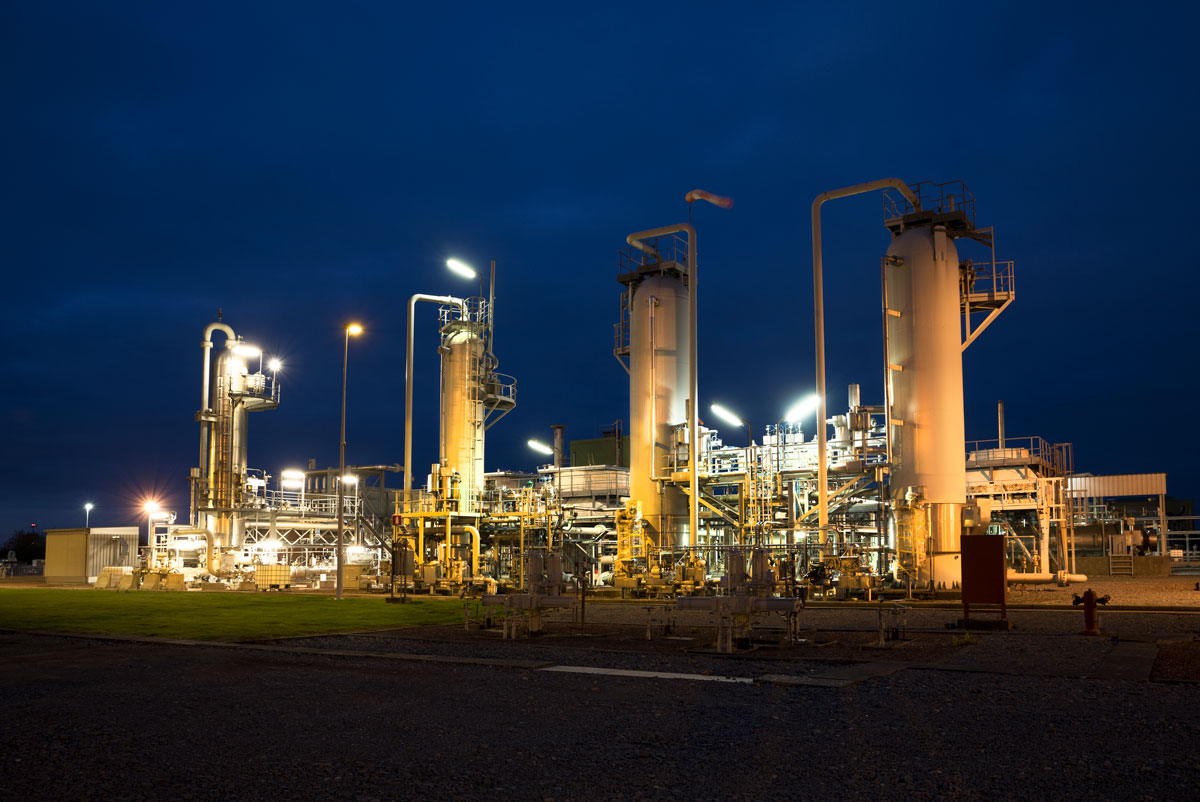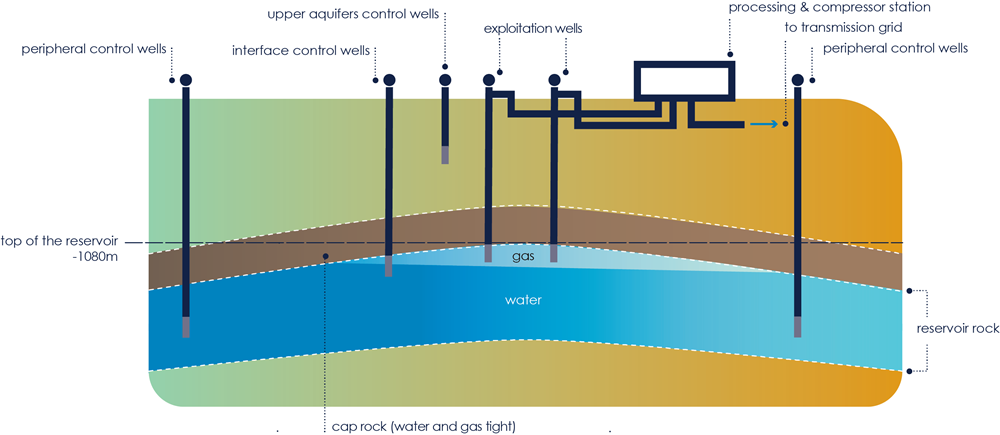
Loenhout underground storage
A giant buffer for the energy system
Loenhout is a unique Fluxys facility, where we operate an underground gas storage plant which serves as a giant buffer for the energy system. The storage capacity in Loenhout could also be a crucial building block for the future energy system if our research into underground hydrogen storage proves successful.
This facility is an aquifer storage for high calorific natural gas with a firm capacity of 7.6 TWh.

Natural gas at Loenhout in a nutshell
Belgium’s biggest storage capacity reservoir
The facility has an energy storage capacity equivalent to the annual gas consumption of 450,000 households. Loenhout’s send-out capacity (7.25 GWh/hour) represents the equivalent output of 7 nuclear reactors.
Loenhout supports Belgium’s security of supply buffer and flexibility for peak consumption during cold winter months, balancing supply and demand.
Together with the Zeebrugge (Belgium) and Dunkirk (France) LNG terminals, the Loenhout reservoir is an essential part of our infrastructure to contribute to a sustainable and secure energy supply.
Storage capacity
The total capacity of the underground storage is 1.4 billion cubic metres of high calorific natural gas.
Of this, slightly more than half (770 mcm) is useful gas. The rest (640 mcm) is so-called ‘pillow gas’ and cannot be extracted from the underground. It must remain in the storage rock, so that there is always sufficient pressure for the storage to function properly.
The 770 million cubic metres is a buffer to better cope with peak consumption, especially during cold winter months. Thanks to the storage capacity, customers have a flexible source of natural gas for the continuous supply of their end users or for their activities at the gas trading points.
Loenhout's unique geological conditions
Nature, not man, has created the ideal conditions for natural gas storage deep in the soil of Loenhout.
More than a kilometre underground is a water- and gas-tight layer of rock that covers porous rock formations which make it particularly suitable for storing natural gas. That storage started in 1985 and continues to this day.
The site in Loenhout is a so-called aquifer, in which natural gas is stored in porous rock that acts like a sponge. It’s one of about 30 in Europa.
The soil in Loenhout and its surroundings consists of two essential layers:
- Dome rock: dome-shaped rock layer (Namurian) that is water- and gas-tight and seals off the underlying layer by its shape.
- Storage rock: under the dome rock is a rock (Dinantian). It is like the high rock on which the citadel of Dinant stands, but then underground. The storage rock in Loenhout is full of cavities that are filled with warm, salty water. This layer is ideal for natural gas storage: the cavities are large enough and sufficiently interconnected to allow the natural gas to be easily injected into and extracted from the rock.
